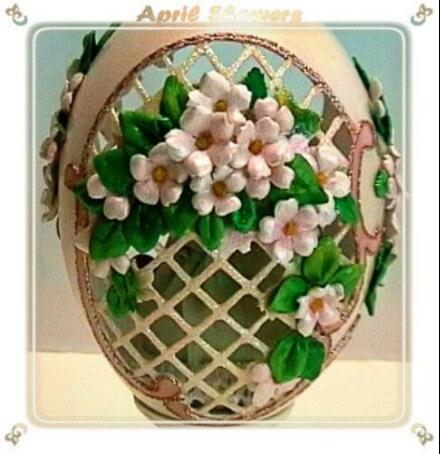from Dotl.....
3/4 cup of white glue
1 cup cornstarch
1/2 cup of water
1 teaspoon of cold cream*
1 teaspoon of glycerin
Mix wet ingredients until smooth over medium heat. Cook for a few minutes and add cornstarch. Stir continually until it forms a ball, remove from pan and mix thoroughly with hands. (I like to cover with a damp cloth until its cool enough to handle) do not refrigerate. Keep in an airtight bag.
* Ponds Cold Cream will do the job also Sorbolene (in Australia), which is what I use because I couldn't get cold cream. You will find Sorbolene at the supermarket or chemist (pharmacy). You could probably try any white hand cream with similar results.
Use as you would any modeling paste, can be molded and used in many ways... use chalk powder to colour, or paint with any paint when dry.
Use cold cream to moisten mold and/or when you are working with it, if it becomes sticky.. Or ..dust with cornstarch...adjust ingredients for more or less.
Another one (for some reason called Mastic)
1/4 cup of water
1/4 cup of cornstarch
1/4 cup of Bicarb soda
Mix all ingredients together and cook (stirring) until it forms a ball. This is used the same as above. Great for flowers and tiny things!!!!and so soft to work with!

Here's an example of flowers
made with cold porcelain
by Maureen Williams
From Maureen.....
Cold porcelain is ideal for making your flowers and has a much finer finish than either bread dough or fimo (polymer clay). You can literally get the petals wafer thin by either rolling out like icing or moulding with a modelling tool. For the tiny petals I use a toothpick to thin over my finger.
To get a really delicate colour, dust with Petal Dust (powered food colouring) using a soft dry brush and then hold in the steam of a kettle. The porcelain will absorb the colour. The dust should be applied once the flowers have dried.
More from Maureen.....
Although the porcelain paste can be coloured in many different ways, the disadvantage I find with the liquid food colouring is that it gives a solid, all over colour and it shortens the working time.
For a more realistic shading of the flowers, try dusting the dry flowers with powdered food dye (same as used in cake decorating) and then hold in the steam of a kettle. The porcelain will absorb the colour and looks much more natural.
Acrylic paints can also be used for painting the flowers where a deeper colour is required.
From Bev......
Here is the recipe:
3/4 cup white glue (Aleene's Tacky)
1 cup cornstarch
1/2 cup water (or less if needed)
1 tsp Cold Cream (any cheap brand)
1 tsp. glycerin.
Mix wet ingredients until smooth over medium heat (cook for a few
minutes), add cornstarch.
Stir continually till it makes a ball.
Remove from pan and mix thoroughly with hands.
Cover with saran wrap. Do not refrigerate.
Helpful hint.
Use an old pot, you will probably want to use oil paints to color.
When you make flowers or figures, let them air dry.
From Dotl......
I have this recipe..a friend gave me and it is called flower paste..it calls for icing sugar, I have'nt tried it, but I feel that cornstarch can be substituted for that..
10 ml powdered gelatine
25 ml cold water
10 ml liquid glucose
400 grm icing suger (?cornstarch/powder)
5 ml gum tragaganth
20 ml caboxy methyl cellulose
1 egg white
method.....
sprinkle gelatine over the water. leave for one hour add the fat and glucose to the soaked gelatine and place over hot water until dissolved.
Warm the icing sugar (or c/starch) in an oven on a low setting. Warm a mixing bowl and beater.
Place the icing sugar, gum tragaganth and carb.methyl cell. in the warm mixing bowl.
mix well.
The longer it is mixed, the whiter it becomes..
store in a plastic bag in an airtight container..
BTW... Gum tragaganth and carb.methyl cell. are available from cake decorator suppliers.
From Benna Gorden......
Since I have been making bread dough flowers for nearly 35 years, I am
partial to it over the cold porcelain, because it can be made more
translucent. The cold porcelain is great for a lot of things, and I use it also.
My suggestion for coloring either is to use tube watercolors. They do
not dilute the dough so much, retain their colors, and there is such a
wide variety of colors that can be used. Food coloring will fade in
time. I have not used the cake powder, so cannot tell anything about
that.
For those of you who have trouble in a damp climate - keep your flowers in a box with some silicone gel. Also, if you have trouble with bugs (and this comes from experience) try putting a few drops of formaldehyde in your dough mixture. It will not affect the color, etc., but will keep the bugs away. The bugs do love white glue! | 